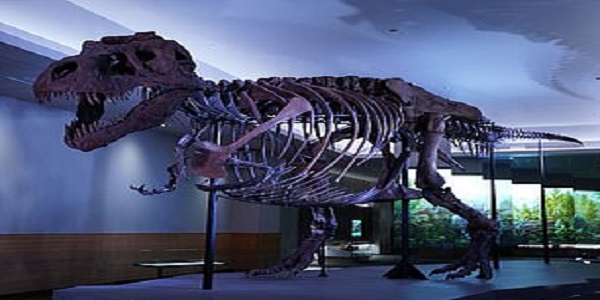Dinosaur-like beast called ‘Smok’ that lived 210 million years ago crushed and ate BONES like a hyena to feast on salt and marrow
A dinosaur-like reptile that lived 210 million years ago used to crush and eat bones like hyenas, for salt and marrow, according to Daily Mail.
Fossil droppings of the Smok wawelski seem to contain chewed-up bone fragments, researchers have found.
The Smok wawelski is in the archosaur family, who are represented today by crocodiles.
Researchers at Uppsala University in Sweden concluded that the predator was eating bones for salt and marrow.
This behaviour is typically linked to mammals rather than reptiles. Most predatory dinosaurs used their teeth to feed on flesh, rather than crushing bones.
The major exception is in the tyrannosaurids family, who are thought to have been voluntarily eating and digesting bones based on fossils.
However, the new study by Uppsala university has found ten large fossil droppings, linked to Smok wawelski.
They lived 140 million years before tyrannosaurids but had a T. Rex-like appearance, although it is not fully clear whether it was a true dinosaur or a dinosaur-like precursor.
Researchers scanned the fossils droppings to make 3D images of them, making it possible to visualise internal structures in fossils.
They contained almost 50 per cent of bones from prey animals and several crushed teeth, belonging to the Smok wawelski.
Scientists concluded that the teeth were crushed repeatedly against hard items of food and involuntarily ingested.
Similar evidence for bone-crushing is also found in fossils from the same bone beds. This includes work teeth and bone-rich fossil.
Martin Qvarnström, who led the study, said: ‘The similarities in shape, the large sizes, and the contents of the coprolites suggest that they were produced by one and the same species that occupied a position as the apex predator in the ecosystem.
‘They were probably involuntarily ingested as the coprolite-producing individual broke its own teeth during feeding (although cannibalism cannot be completely ruled out).’
Generally, animals who consume bones as part of a diet, have massive heads and robust bodies.
The Smok shares these characteristics with tyrannosaurids, despite being distantly related and living 140 million years apart.
This seems to provide evidence of similar feeding methods being used at the beginning and end of the dinosaurs.
Today, animals still eat bones. Such animals include giraffes, cattle, domestic dogs and grizzly bears.
Generally, herbivores eat bones to supplement the lack of phosphorus in their diets.
N.H.Kh

